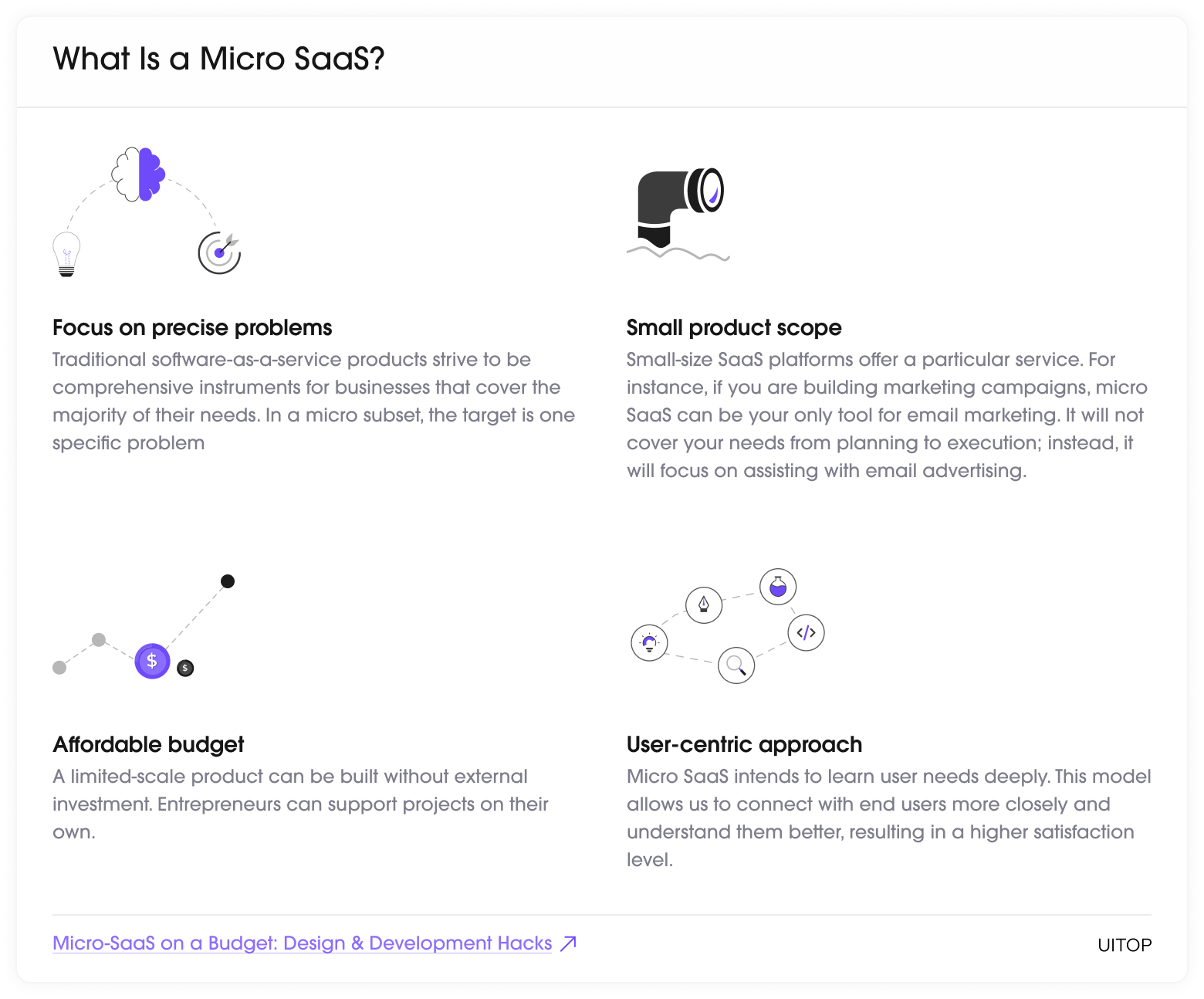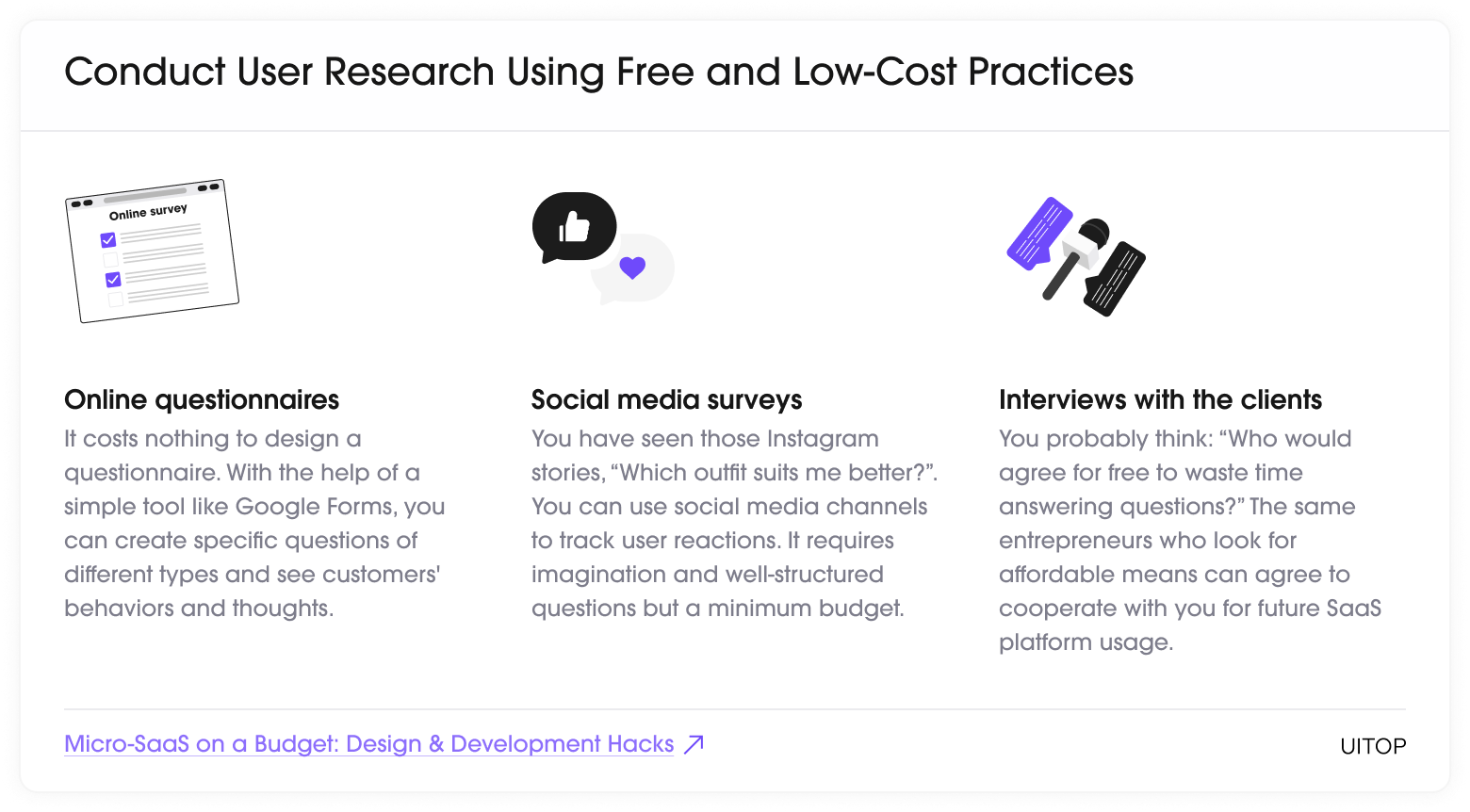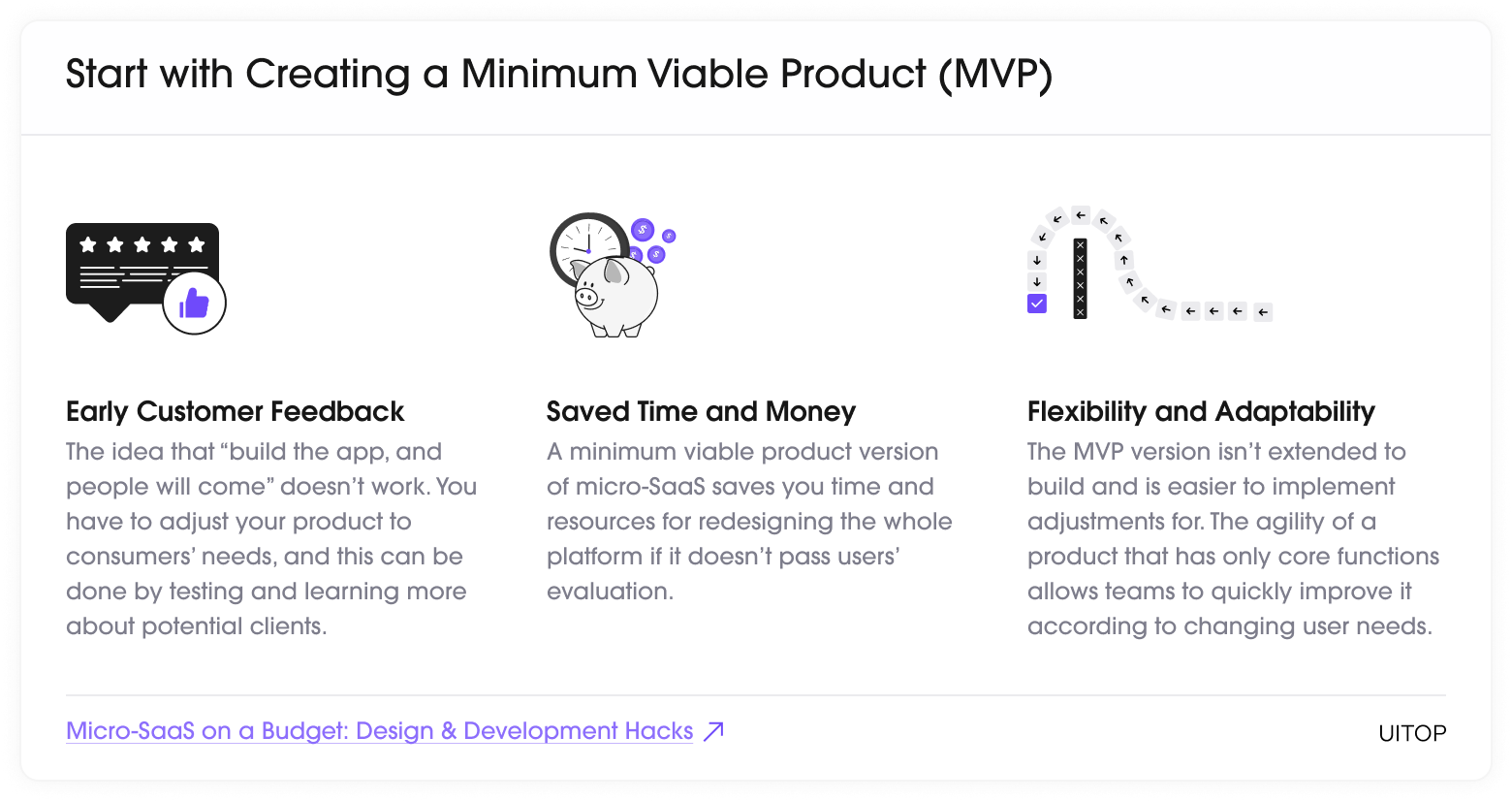What is SaaS?
If you're just beginning to research the idea of SaaS, this is the place to understand what SaaS can accomplish for you, how it works and differs, what are the main examples and what the future holds for SaaS development.
The evolving digital terrain offers unique opportunities for developing and growing big and small businesses. While there is a widespread belief that building software can only be obtained with an enormous resource base, the micro-SaaS model refutes this belief. Over the past few years, the niche-specific solutions of small-scale SaaS businesses have contributed to the SaaS market’s growth, which is estimated to reach 247 billion dollars in 2024.
The user’s fascination with this model is also evident. The number of companies using micro-SaaS features has grown by 30% annually. So why miss the opportunity to start with limited resources while still in a profitable industry? Learn design and development hacks to build small-scale SaaS that will not require significant budget investment.
Micro software as a service is a digital product that aims to solve a specific problem and has a very narrow target audience. Its structure is simple and concise compared with the traditional SaaS niche. Specific industry-oriented solutions are developed by small teams or solo entrepreneurs within a short timeframe and within a budget. Micro SaaS platforms focus on providing a high-quality resolution approach to specific user needs rather than scaling. This model is perfect for beginners who want to start their digital product development journey.
Creating micro-SaaS has the following unique characteristics:

A micro-SaaS business is profitable if you start with a limited resource base. Yet, this factor contributes to several challenges entrepreneurs can face. The most significant one is the talent pool that can handle the SaaS cloud-based model’s technical complexity. In addition to high feature quality, the platform should have a robust infrastructure, solid security, and seamless integration. This can be managed only by experienced development and design teams that require proper funding.
Staying ahead of competitors and acquiring customers poses another difficulty in micro-SaaS development. As in any other niche, to earn high revenue, you have to attract many clients. But before you become popular and attract people through organic traffic, you need to build marketing strategies that require investment.
SaaS development doesn’t end after a product release. It continues through maintenance and upgrades. So, you must have talented front-end, back-end, and cloud-computing teams to support your application.
However, we are ready to present you with a solution of “hacks” on how to build a micro-SaaS in a budget-conscious way.
UI/UX design is always seen as exclusive and expensive. Many will agree with this statement, as the visual and navigational sides of apps define user interaction success. However, several aspects of digital product design can be adjusted from a budget point of view.
The SaaS model concept heavily relies on meeting users’ needs and solving their pains. In the micro-SaaS world, staying close to the end client is even more crucial, as the product is expected to cover specific requirements.
Conducting user research sounds like an additional activity for startups to implement. But in the long run, spending time and a small budget on crafting the user journey, identifying the audience’s needs, and making user personas will pay off with clear design solutions that won’t need redesigning when delivered to customers. Otherwise, guessing what users want is a high-cost pursuit instead of following a data-driven approach.
Gaining valuable insights from end users can be addressed via various methods. Here are the most budget-friendly ones:

Another way to design with a budget is to follow minimalist design principles. A micro-SaaS product focuses on delivering quick solutions, so a clean and simple user interface is preferable to cutting-edge design elements.
The benefits of following a minimalistic design route are numerous. The weighty one is reducing information overload. The more features and unimportant actions are excluded from the design, the quicker the user journey becomes. The page with the fewest elements also loads faster.
Micro-SaaS applications’ primary goal is to satisfy user needs. A clear and transparent design will not distract customers but rather give them a perfect place to work efficiently.
Minimalistic style is also a synonym for aesthetics. Eye-comforting design and high-quality functionality can put your SaaS project in a top market position.
The open-source model allows designers and developers to share and collaborate for the best results. There are multiple tools everyone can access based on free trial or use without paying, with a limited range of functions. Designers will appreciate using these free instruments:
Developing an application, especially using advanced SaaS technology, requires expertise and investment. However, there are steps where development teams can minimize costs and choose the most affordable option.
An MVP version of a micro SaaS platform is the concept of creating a product with core functions and collecting valuable feedback from users. This is the fastest and most affordable way to get to the market and observe how people operate your application. Entrepreneurs often misunderstand this term, assuming MVP is about creating a glitchy app with some functions that work with imperfections. However, its concept is not about sacrificing product quality but about delivering the main idea and gaining an understanding of how it is reflected through users’ feedback. Some benefits of starting with the MVP micro-SaaS are below.
The idea that “build the app, and people will come” doesn’t work. You have to adjust your product to consumers’ needs, and this can be done by testing and learning more about potential clients. An example of how MVP transformed into a worldwide popular platform is Twitter. It was originally an internal communication messenger. However, its intuitiveness and simplicity hit the users’ hearts and made the product famous throughout the world.

You can create an excellent product and believe in its success, but your effort is only worthwhile if it is feasible to market. A minimum viable product version of micro-SaaS saves you time and resources for redesigning the whole platform if it doesn’t pass users’ evaluation.
The MVP version isn’t extended to build and is easier to implement adjustments for. The agility of a product that has only core functions allows teams to quickly improve it according to changing user needs. Flexibility helps to mitigate risks that can occur after the final product release as it tests different scenarios, resulting in receiving the best version of the product.
Low-code, no-code development for digital product creation has gained popularity lately. In 2024, developing software with no coding skills is estimated to take up 65% of all development processes. This concept is presented by the ability to make applications using platform builders. So developers can just drag and drop visual elements built on coding languages to get the new program running.
For a micro-SaaS, using low-code and no-code development tools can be an optimal decision, as the products of this niche focus rather on one specific function. Tools like Wix, Webflow, or Bubble are profitable for startups in small-scale SaaS creation. They don’t require much funding, deploy updates regularly, allow integration, and streamline the overall development process.
Another way to speed up the development process and save your budget is to use open-source libraries and frameworks. These allow developers to share and collaborate. The idea is to access the publicly available source code and modify it according to your needs.
Let’s imagine you want to implement a new feature in your micro-SaaS. Instead of coding it from scratch and hoping for its seamless integration with the whole system, you can go to the relevant libraries or use already-built frameworks to access similar features and get a draft or completely use them.
Examples of the best open-source platforms are the following:
A micro-SaaS product is a solution for a specific niche that solves only one problem. As the demand for small-size and narrowly targeted applications rises, entrepreneurs should not hesitate to invest in this profitable business. Budget constraints are no longer an obstacle to creating a high-value micro-SaaS platform.
The design and development hacks presented above show that many aspects of app creation are budget-friendly or completely free. From affordable user research methods to using free app builders, you can craft your software as a service product quickly and without expensive funding.
Staying close to end users is crucial to project success in the micro-SaaS niche. When releasing a product, you must always monitor customers’ needs and how they change to tailor your platform to actual clients’ requirements.
And if you want your micro-SaaS project development and design to go smoothly, contact us. We will provide you with the steps and procedures to build high-quality software as a service product that attracts users and provides value.

You may also be interested
What is SaaS?
If you're just beginning to research the idea of SaaS, this is the place to understand what SaaS can accomplish for you, how it works and differs, what are the main examples and what the future holds for SaaS development.
How to Choose the Right Type of SaaS Software for Your Business
The software landscape has fundamentally shifted. Gone are the days of clunky desktop applications and on-premise servers. SaaS now dominates, offering always-on, highly scalable solutions accessible from any device. Understanding the diversity of SaaS solutions available and the unique needs of users across products is imperative. This overview highlights key SaaS software categories relevant to […]
A Transparent Look at SaaS App Design Costs
Software-as-a-service (SaaS) applications have exploded in popularity over the past decade. The ability to deliver software over the Internet without requiring local installation has opened up new possibilities for businesses and consumers. However, developing a custom SaaS product requires careful planning and consideration of many factors — not least, app design cost. With so many […]
Let’s discuss your product needs
“They took extra time to ensure that our frontend developer could easily implement the wireframes.”


Your Project Starts Here!
Our processes with your needs in mind drives any SaaS product growth. Let’s see how our approach aligns with your vision.
Let’s discuss your design challenges
Please leave your email so we can contact you

Tell us a little more about your product so we can estimate it
We'll help you make the right choice!
Leave your email to receive regular updates to your inbox